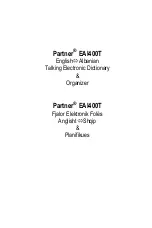
EXi: PolysixEX
312
Pulse waveform at different widths
PWM SPEED
[0.00...10.00]
The PolysixEX has an LFO dedicated to pulse width
modulation (PWM). This adjusts the speed of that
LFO. Note that this applies only when the
WAVEFORM
is set to
PWM
.
The dedicated PWM LFO is shared between all the
PolysixEX voices, similar to the Common LFO.
If you’d like more flexible PWM, including per-voice
modulation, you can use AMS to modulate the
PW/PWM
parameter directly.
SUB OSC
[2OCT, 1OCT, OFF]
The VCO includes a sub-oscillator. You can set this to
sound either one or two octaves below the main
oscillator, or turn it off completely if desired.
2OCT
: the sub-oscillator will sound at two octaves
below the main oscillator.
1OCT
: the sub-oscillator will sound at one octave
below the main oscillator.
OFF
: disables the sub-oscillator.
4-1b: MG (Modulation Generator)
The MG is shared between all PolysixEX voices,
similar to the Common LFO. For per-voice
modulation, use
LFO1
or
2
instead.
The MG is available as an AMS source throughout the
PolysixEX, in two different versions:
MG
is the
unaltered MG signal, and
MG + Delay
is at 0 until the
programmed
DELAY
time has elapsed.
TEMPO SYNC
[Off, On]
Touch the text/LED area to turn
TEMPO SYNC
on
and off.
On (LED lit):
When
TEMPO SYNC
is
On
, the MG
synchronizes to the system tempo, as set by either the
Tempo knob or MIDI Clock. The MG speed is
controlled by the combination of the
BASE NOTE
and
FREQUENCY/TIMES
parameters, below.
Off (LED dark):
When
TEMPO SYNC
is
Off
, the
FREQUENCY/TIMES
knob determines the speed of
the MG, and the
BASE NOTE setting
has no effect.
This parameter is not modulatable via AMS.
KEY SYNC
[Off, On]
If this setting is
ON
, the phase is reset for the first note-
on in each legato phrase. Subsequent notes in a chord,
or notes played legato, do not cause the phase to be
reset.
This parameter is not modulatable via AMS.
BASE NOTE
[1/1...1/32]
When
TEMPO SYNC
is
ON,
this sets the basic speed
of the MG, relative to the system tempo. The values
range from a 32nd note to a whole note, including
triplets. This value is then multiplied by the
FREQUENCY/TIMES
knob, below.
When
TEMPO SYNC
is
OFF
, this parameter has no
effect.
This parameter is not modulatable via AMS.
FREQUENCY/TIMES
[0.00...10.00/16...1]
If
TEMPO SYNC
is
OFF
, this controls the frequency of
the MG.
If
TEMPO SYNC
is
ON
, this multiplies the length of
the
BASE NOTE
. For instance, if the
BASE NOTE
is
set to a sixteenth note, and Times is set to 3, the MG
will cycle over a dotted eighth note. Note that higher
values mean a faster MG.
DELAY
[0.00...10.00]
Adjusts the time from note-on until the MG is heard.
Note that this affects only the routing selected by the
MODE
parameter, below; the
VIBRATO
always uses
the un-delayed MG signal.
LEVEL
[0.00...10.00]
Adjusts the depth of the effect produced by the MG.
MODE
[VCA, VCF, VCO]
Selects whether the MG modulates the amplitude
(
VCA
), the filter cutoff (
VCF
), or the pitch (
VCO
).
4-1c: VCF
CUTOFF
[0.00...10.00]
This controls the cutoff frequency of the 24dB lowpass
filter. Sounds above this frequency are removed,
making the timbre darker.
This is scaled by MIDI CC#74.
RESONANCE
[0.00...10.00]
Resonance emphasizes the frequencies around the
cutoff frequency.
When this is set to
0
, there is no emphasis, and
frequencies beyond the cutoff will simply diminish
smoothly.
At medium settings, the resonance will alter the timbre
of the filter, making it sound more nasal, or more
extreme.
At very high settings, the resonance can be heard as a
separate, whistling pitch. Near the maximum setting,
the filter will self-oscillate.
RESONANCE
is scaled by MIDI CC#7.
EG INTENSITY
[–5.00…+5.00]
Specifies the depth and direction to which the EG will
affect the cutoff frequency.
This is scaled by MIDI CC#79.
Pulse Width = 0.00
Pulse Width = 9.00
Pulse Width = 5.00
Summary of Contents for Electronic Keyboard
Page 1: ...Parameter Guide Parameter Guide ...
Page 2: ......
Page 180: ...Program mode EXi 170 ...
Page 290: ...EXi STR 1 Plucked String 280 ...
Page 572: ...Sequencer mode 562 ...
Page 700: ...Global mode 690 ...
Page 751: ...Insert Effects IFX1 IFX12 Routing 741 Fig 2 3a Fig 2 3b ...
Page 902: ...Effect Guide 892 ...
















































